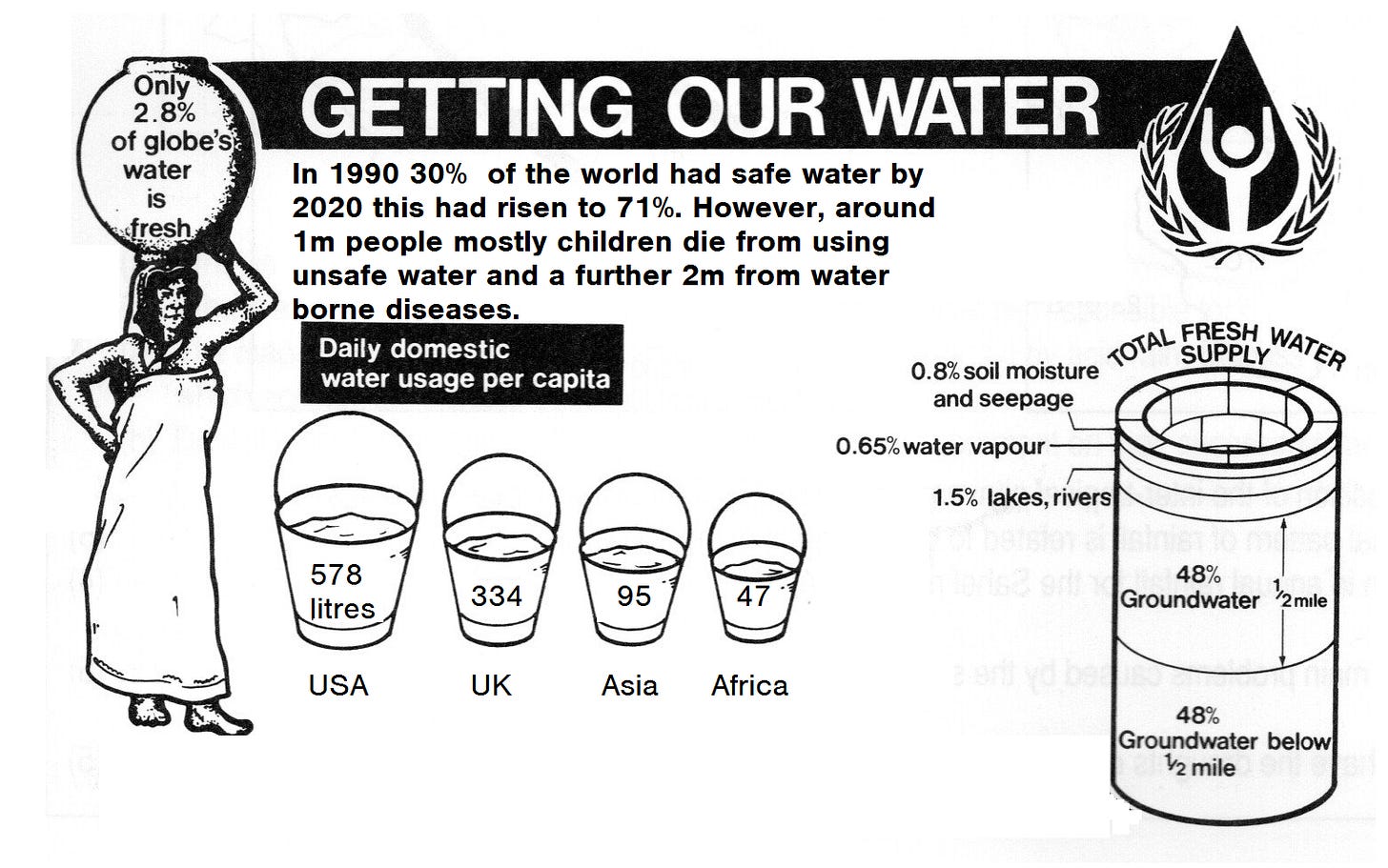Freshwater, the lifeblood of our planet, is not distributed evenly across the globe. While some regions boast abundant rivers, lakes, and aquifers, others grapple with chronic water scarcity, facing immense challenges in securing this vital resource. This uneven distribution presents a significant barrier to sustainable development and human well-being in many parts of the world.
A Geographical Disparity:
The disparity in freshwater availability is stark. According to the World Resources Institute, around 17 countries, primarily located in the Middle East and North Africa, face "extremely high" water stress, meaning they withdraw more than 80% of their available water resources (World Resources Institute, 2023). Conversely, regions like the Amazon basin boast vast freshwater resources, highlighting the geographical imbalance.
Challenges on the Ground:
The consequences of water scarcity are far-reaching and deeply concerning:
Limited access to drinking water: Millions lack access to safe drinking water, leading to health problems like waterborne diseases and malnutrition, disproportionately impacting vulnerable populations like children and women (UNICEF, 2023).
Impact on food security: Water scarcity hinders agricultural productivity, threatening food security and exacerbating hunger, particularly in regions heavily reliant on rain-fed agriculture (Food and Agriculture Organization, 2020).
Environmental degradation: Overexploitation of limited water resources can lead to salinisation, soil erosion, and ecosystem degradation, creating a vicious cycle of environmental challenges (United Nations Environment Programme, 2021).
Spotlight on Vulnerable Regions:
Several regions face particularly acute water scarcity challenges:
Sub-Saharan Africa: This region is home to many of the countries experiencing "extremely high" water stress, with climate change and population growth further exacerbating the issue (World Resources Institute, 2023).
Central Asia: The Aral Sea crisis serves as a stark reminder of the consequences of unsustainable water management practices, leaving communities grappling with water scarcity and environmental degradation (BBC News, 2023).
Middle East: Water scarcity is a major concern across the region, with competition for limited resources fueling tensions and hindering development (World Bank, 2020).
Mexico City Faces Looming Water Crisis
Mexico City, a sprawling metropolis with over 20 million residents, is grappling with a severe water shortage. The city relies heavily on its surrounding aquifers and the Cutzamala System, a network of reservoirs and canals, for its water supply. However, years of overexploitation and inadequate rainfall have pushed these to their limits.
The current crisis is particularly concerning due to several factors. Firstly, the Cutzamala System's water levels are at historic lows, with some reservoirs reportedly at only 30% capacity (Excelsior, 2024). This decrease is attributed to below-average rainfall in recent years, coupled with continuously rising demand from the ever-growing population.
Secondly, overextraction of groundwater has caused the city to sink at an alarming rate, further straining the water supply infrastructure. Additionally, climate change is expected to exacerbate the situation by increasing the frequency and intensity of droughts.
The consequences of water scarcity in Mexico City are already being felt. Residents in some areas are experiencing water rationing and disruptions, impacting daily life and sanitation. Businesses are also facing challenges, and the long-term economic implications could be significant.
Addressing this crisis requires a multi-pronged approach. Investing in sustainable water management practices, such as rainwater harvesting, greywater reuse, and leak detection and repair, is crucial. Additionally, exploring alternative water sources, like desalination, and raising public awareness about water conservation are essential steps.
Mexico City's water crisis serves as a stark reminder of the challenges posed by limited water resources and unsustainable practices. Taking decisive action now is critical to ensure a secure water future for the city's residents and its overall prosperity.
Seeking Solutions:
Addressing the challenges of uneven water distribution requires a multifaceted approach:
Sustainable water management: Implementing practices like rainwater harvesting, improved irrigation techniques, and wastewater treatment can help conserve existing resources.
Investing in infrastructure: Developing desalination plants and improving water distribution networks can provide access to clean water in water-scarce regions.
Climate change mitigation: Addressing climate change is crucial, as it is expected to exacerbate water scarcity through increased droughts and extreme weather events.
Cooperation and collaboration: International cooperation and knowledge sharing are essential to develop sustainable solutions and ensure equitable access to water resources.
Conclusion:
The uneven distribution of freshwater resources presents a significant global challenge. By acknowledging the disparities, understanding the consequences for vulnerable regions, and implementing sustainable solutions, we can work towards a future where everyone has access to this essential resource.
References:
BBC News. (2023, January 25). Aral Sea: The lake that vanished. https://www.bbc.com/news/world/asia
Food and Agriculture Organization (FAO). (2020, June 1). Water scarcity. https://www.fao.org/land-water/water/water-scarcity/en/
UNICEF. (2023, February 15). Water, Sanitation and Hygiene (WASH). https://www.unicef.org/wash
United Nations Environment Programme (UNEP). (2021, March 22). Freshwater. https://www.unep.org/topics/fresh-water
World Bank. (2020, October 6). Water Scarcity in the Middle East and North Africa. https://www.worldbank.org/en/news/press-release/2023/04/27/water-scarcity-in-mena-requires-bold-actions-says-world-bank-report
World Resources Institute. (2023, March 14). Aqueduct Water Risk Atlas. https://www.wri.org/data/water-stress-country
Excelsior. (2024, February 1). Crisis del agua en la CDMX: Sistema Cutzamala al 30% y pozos secos [Water crisis in Mexico City: Cutzamala System at 30% and dry wells]. https://www.reuters.com/world/americas/mexico-city-residents-protest-unprecedented-water-shortages-2024-01-31/







